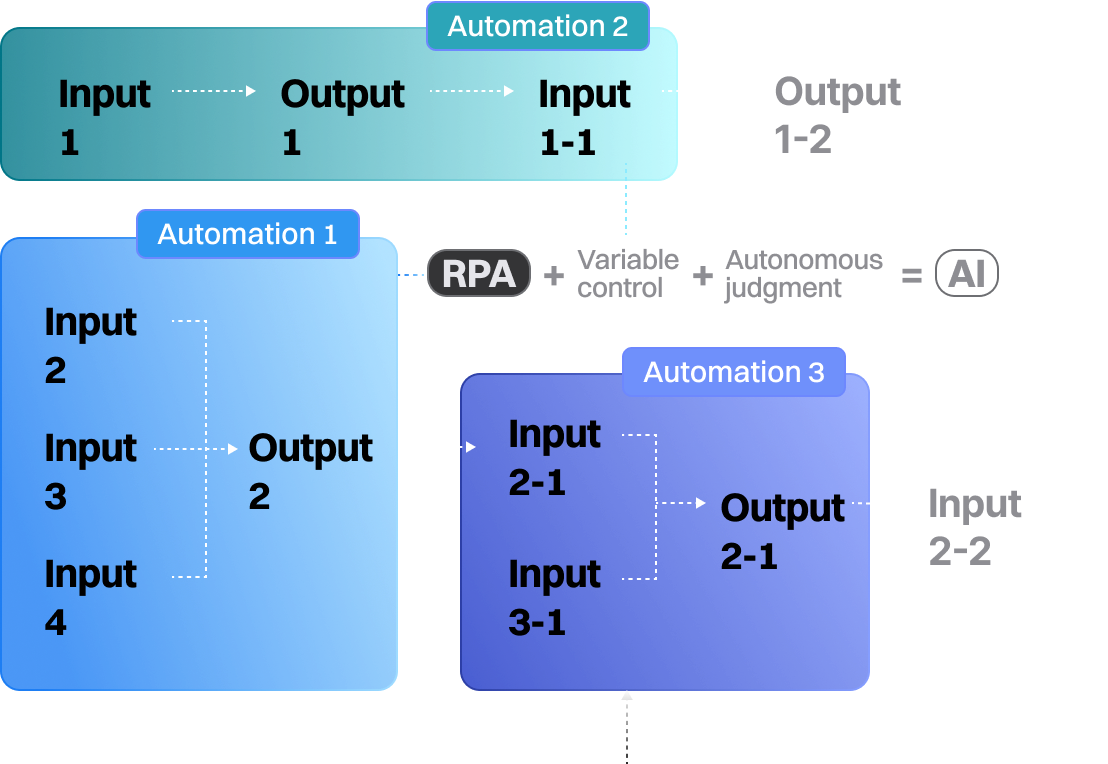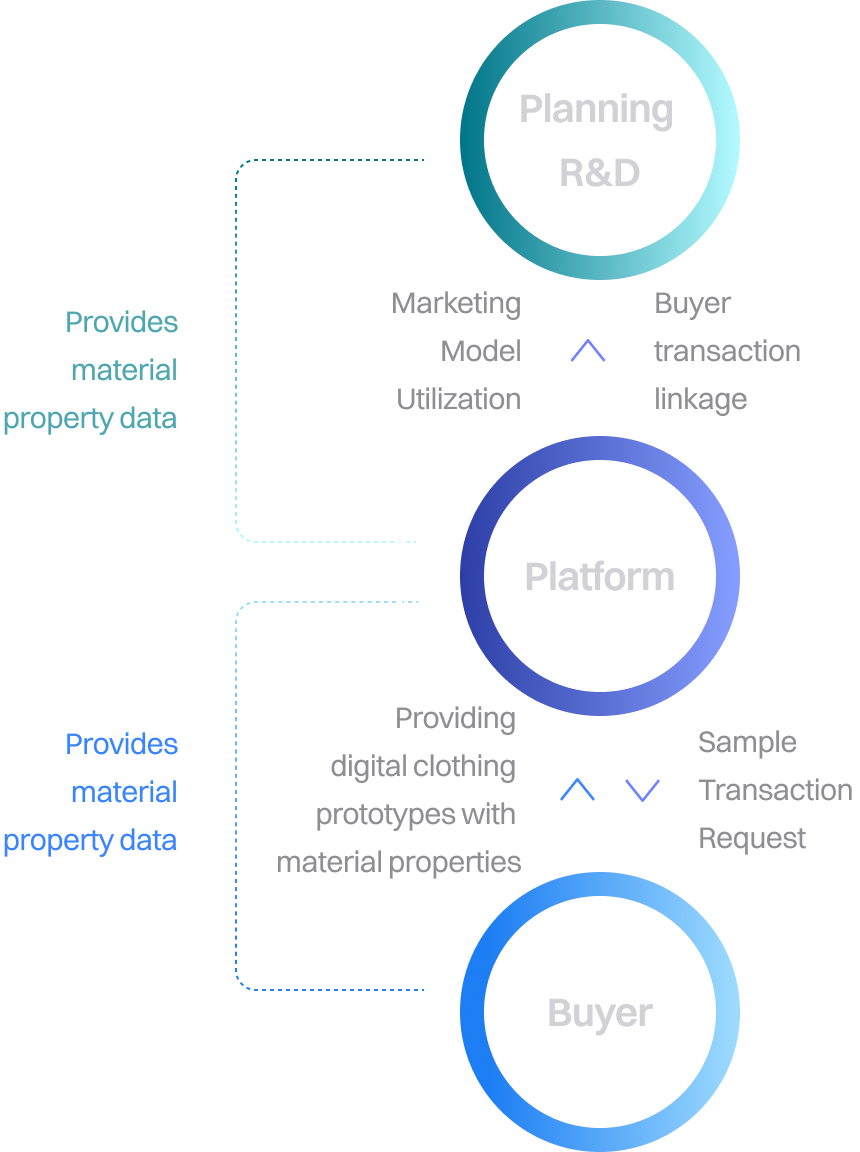The starting point of a journey
We will use IT to optimize sourcing and production, shaping the future of apparel.
In the future, good clothes may no longer be as affordable as they are today.
The clothing industry's complex production structure faces limitations.
Property
The delicate nature of clothing challenges both standardization and automation.
Off-Shoring
The clothing industry relies on labor-intensive methods and low-cost production in developing countries.
Technology
Rapid advancements bring sewing robots closer, highlighting the need for future autonomous manufacturing.
Present
The clothing supply chain includes brands, traders, and factories, with intricate interconnections across departments, making communication difficult.
Problem
The real challenge for the clothing supply chain begins now. Beyond rising labor and material costs, the industry faces growing uncertainties and a range of issues to address.
from. Chat GPT (2024.10)
1
Cost
Economical
2
Time
Physical
3
Human
Technical
1
Cost
Economical
2
Time
Physical
3
Human
Technical



1
Cost problems
The core of the global clothing supply chain is creating quality products at low costs. This issue cannot be resolved solely through offshoring or the adoption of smart factories.

2
Time problems
Reducing inefficiencies is crucial for cost-effective production. Traditional ERP systems alone cannot fully address the complexities of the supply chain.

3
Human problems
We implement modular automation to handle specialized tasks and develop AI systems to manage external variables.
We address clothing industry challenges with IoT for real-time sewing monitoring and SaaS for end-to-end process integration.
PoC
In fact, our customers are innovatively in hence productivity.
Increased productivity
+23.5%
Performance in the fourth quarter of 2023
Data collection
+193 tb
Data from February to November 2023
Cost Save
Improved production efficiency
Improved work efficiency
Reduce Processing costs
$1.50 >
$1.00
33.4%
Minimize Office staff
$3.00 >
$0.50
83.4%
Time Efficiency
90%
Expert Replacement
X8
SIJE aims to be a platform integrating food, clothing, and shelter.
Annual production
120 billion
Number of workers in 2022 : 80Million
Turnover
$ 3 trillion
$2 trillion in annual transactions by 2022
Number of workers
80 million
2022 Annual production of 120 billion pieces

~ ₩ 600 B
SOM
Apparel manufacturing IT software market

~ ₩ 14 T
SAM
Smart Solutions Market for Garment Industry
~ ₩ 187.5 T
TAM
5% of the global clothing market

Big data drives digital transformation in the clothing industry
Fashion companies can simulate demand by location and SKU, enabling quick decisions and reducing inventory risks.
Mission
SIJE uses advanced IT to make apparel a key industry of the future.